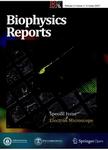Co-encapsulation of curcumin and doxorubicin in albumin nanoparticles blocks the adaptive treatment tolerance of cancer cells
Co-encapsulation of curcumin and doxorubicin in albumin nanoparticles blocks the adaptive treatment tolerance of cancer cells作者机构:CAS Key Laboratory for Biomedical Effects of Nanomaterials and Nanosafety CAS Center for Excellence in Nanoscience National Center for Nanoscience and Technology of China University of Chinese Academy of Sciences Department of Experimental Medicine University of Rome Tor Vergata Department of Biomedicine and Prevention University of Rome Tor Vergata Nanoscience & Nanotechnology & Innovative Instrumentation (NAST) Centre University of Rome Tor Vergata Inflammatory and Infectious Disease Center Sanford-Burnham Medical Research Institute
出 版 物:《Biophysics Reports》 (生物物理学报(英文))
年 卷 期:2019年第5卷第1期
页 面:19-30页
核心收录:
学科分类:1002[医学-临床医学] 100214[医学-肿瘤学] 10[医学]
基 金:financially supported by the National Natural Science Foundation of China (31430031, 51373117, and 51573128) National Distinguished Young Scholars grant (31225009) support by the external cooperation program of BIC,Chinese Academy of Science (121D11KYSB20130006) the ‘Strategic Priority Research Program’’ of the Chinese Academy of Sciences (XDA09030301) the NanOArt grant of the ‘‘Mission Sustainability’’ of the University of Rome Tor Vergata
主 题:Albumin nanoparticles Doxorubicin Curcumin P-glycoprotein Lysosomal pH
摘 要:The adaptive treatment tolerance(ATT) of cancer cells is the main encumbrance to cancer chemotherapy.A potential solution to this problem is to treat cancer cells with multiple drugs using nanoparticles(NPs).In this study, we tested the co-administration of curcumin(Cur) and doxorubicin(Dox) to MCF-7 resistant breast cancer cells to block the ATT and elicit efficient cell killing. Drugs were co-administered to cells both sequentially and simultaneously. Sequential drug co-administration was carried out by pre-treating the cells with albumin nanoparticles(ANPs) loaded with Cur(Cur@ANPs) followed by treatment with Dox-loaded ANPs(Dox@ANPs). Simultaneous drug co-administration was carried out by treating the cells with ANPs loaded with both the drugs(Cur/Dox@ANPs). We found that the simultaneous drug co-administration led to a greater intra-cellular accumulation of Dox and cell killing with respect to the sequential drug co-administration. However, the simultaneous drug co-administration led to a lower intracellular accumulation of Cur with respect to the sequential drug co-administration. We showed that this result was due to the aggregation and entrapment of Cur in the lysosomes as soon as it was released from Cur@ANPs, a phenomenon called lysosomotropism. In contrast, the simultaneous release of Dox and Cur from Cur/Dox@ANPs into the lysosomes led to lysosomal p H elevation, which, in turn, avoided Cur aggregation, led to lysosome swelling and drug release in the cytosol, and finally provoked efficient cell killing. Our study shed the light on the molecular processes driving the therapeutic effects of anti-cancer drugs co-administered to cancer cells in different manners.



